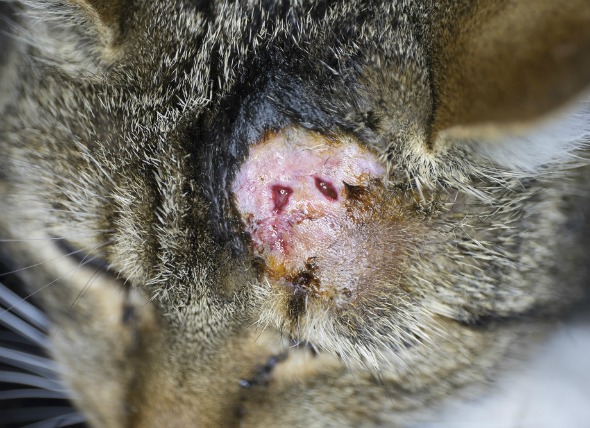Many people think that a trained cat is an oxymoron. Cats are known for their independence, which endears them to some people and makes others prefer dogs. While cats are, in many ways, more independent and self-sufficient than dogs, this does not mean that they cannot be trained. This is especially important in regard to areas of problem behavior.
People sometimes think that where cats are concerned they either have to simply put up with a problem --whether it be aggression, destructive behavior or not using the litter box-- or get rid of the cat. This is, in most cases, simply not true. The vast majority of cats can be trained out of troublesome behavior.
One unpleasant, not to mention unsanitary, cat behavior problem involves the litter box. Since cats are very clean animals, they are easily trained to use the litter box. If a litter trained cat suddenly stops using the box, something is definitely wrong. This is sometimes a medical issue, so the first step is to bring the cat to the veterinarian for a check-up.
After medical problems are ruled out, take a look at the litter box itself. Make sure it's being kept clean. It should also be in the right place, in an out-of-the-way area that is not too near the cat's water and food dishes. Cats are a little like people in preferring a private "bathroom" area. The box should also be large enough for the cat, but not so large as to not feel like an enclosed space.
What about the problem of a cat who is aggressive and bites and scratches you? This is hardly desirable behavior in a pet, and fortunately is can usually be cured without too much fanfare. Again, if the cat's behavior has changed recently, have it checked by a veterinarian. If the cat has always been this way, it may be a feral, or not well socialized cat. In this case, you will have to be patient and take some extra effort at taming the cat.
Watch your cats movements and body language when it is aggressive. Learn when it is "safe" to touch him/her (until your training efforts have paid off, when it should be safe most of the time). You should also make sure your cat gets enough exercise. Make time to play with your cat, every day if possible. This both gives the cat exercise and is a bonding ritual. If your cat is not spayed, you should have it done; this will make the cat calmer and less aggressive.
These are some rather basic tips regarding some common behavior problems. If you have a difficult problem, you will probably have to further educate yourself and invest some time into training your cat. What you should keep in mind is that almost all cats, with the right attention, can be made into great pets!

 Abscesses in Cats
Cats, like people, are prone to skin irritations.
Abscesses in Cats
Cats, like people, are prone to skin irritations.
 Raising Kittens: The Importance Of Play
So, youre thinking of adopti
Raising Kittens: The Importance Of Play
So, youre thinking of adopti
 How to Get Cats to Stay Away From a Porch & Get Rid of the Smell
How to Get Cats to Stay Away From a Porch &
How to Get Cats to Stay Away From a Porch & Get Rid of the Smell
How to Get Cats to Stay Away From a Porch &
 Bladder Inflammation in Cats
Interstitial Cystitis in Cats, Feline Interstitial Cysti
Bladder Inflammation in Cats
Interstitial Cystitis in Cats, Feline Interstitial Cysti
 Miscarriage in Cats
Spontaneous Abortion, Pregnancy Loss in Cats
It i
Miscarriage in Cats
Spontaneous Abortion, Pregnancy Loss in Cats
It i